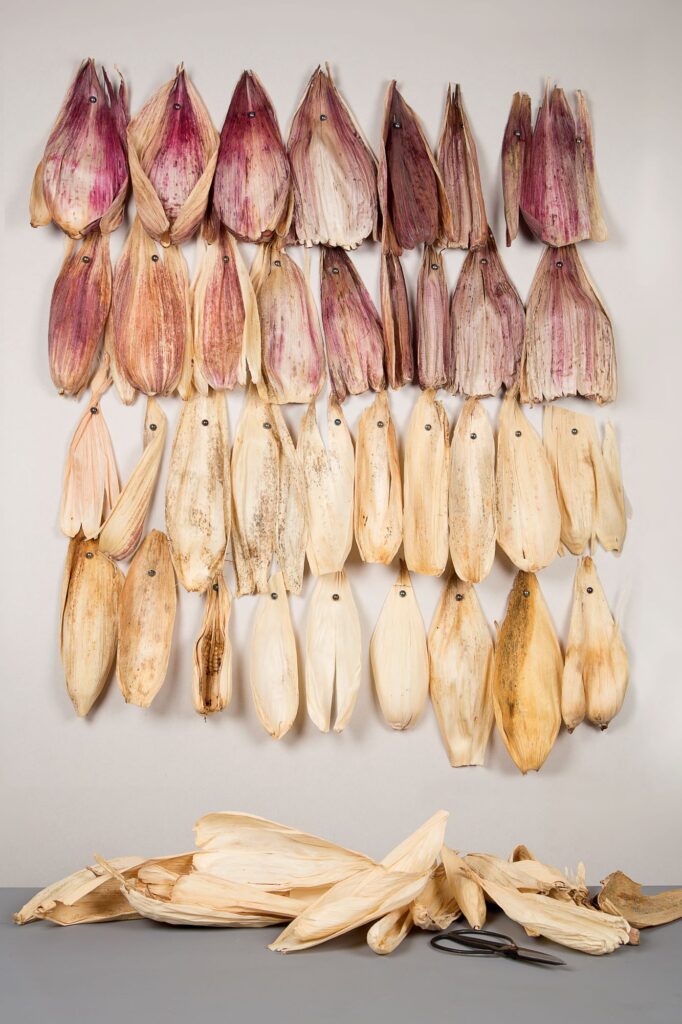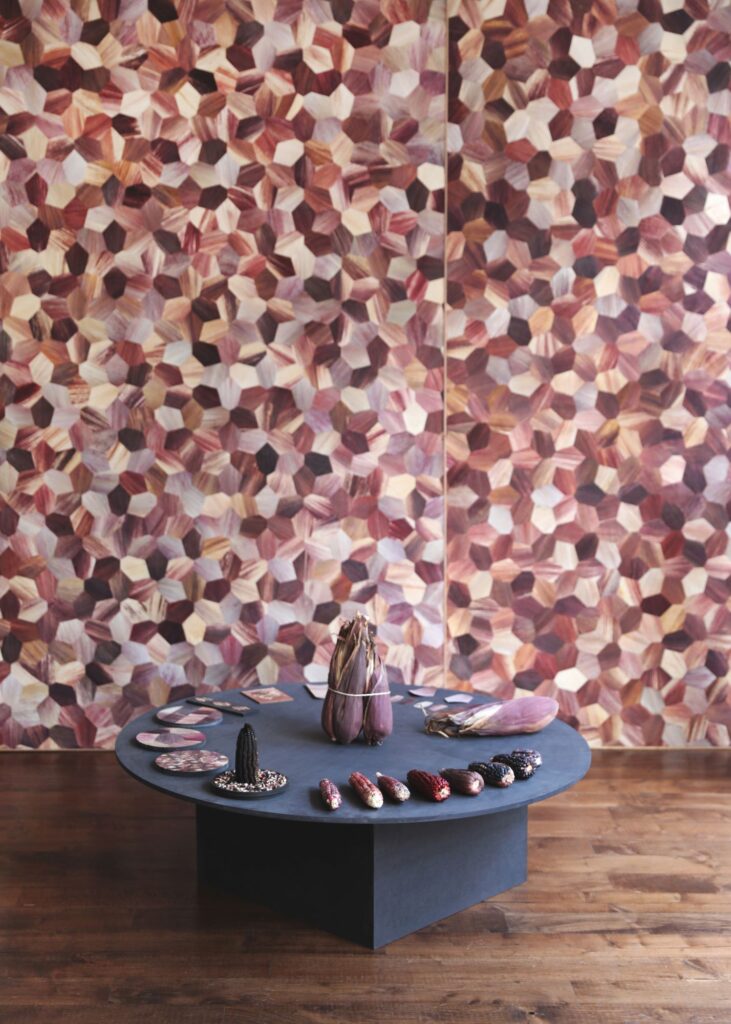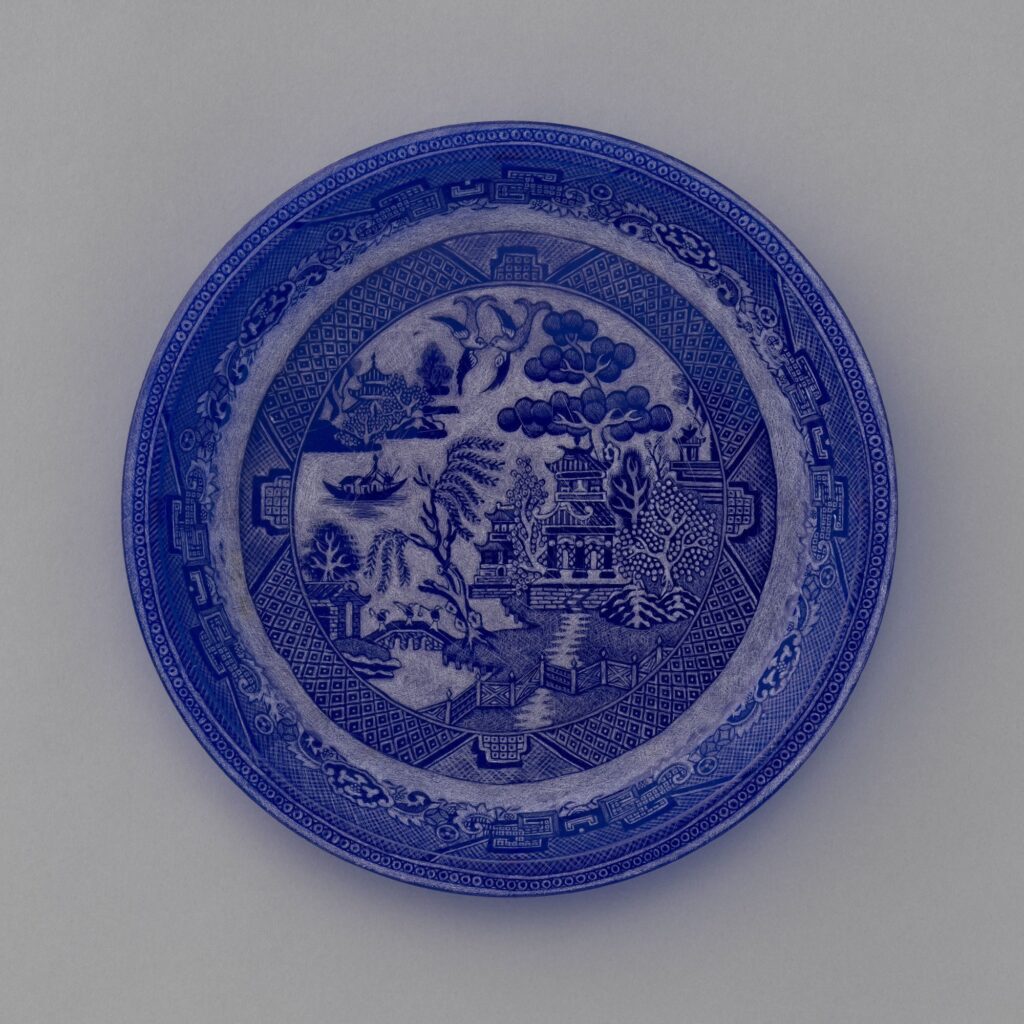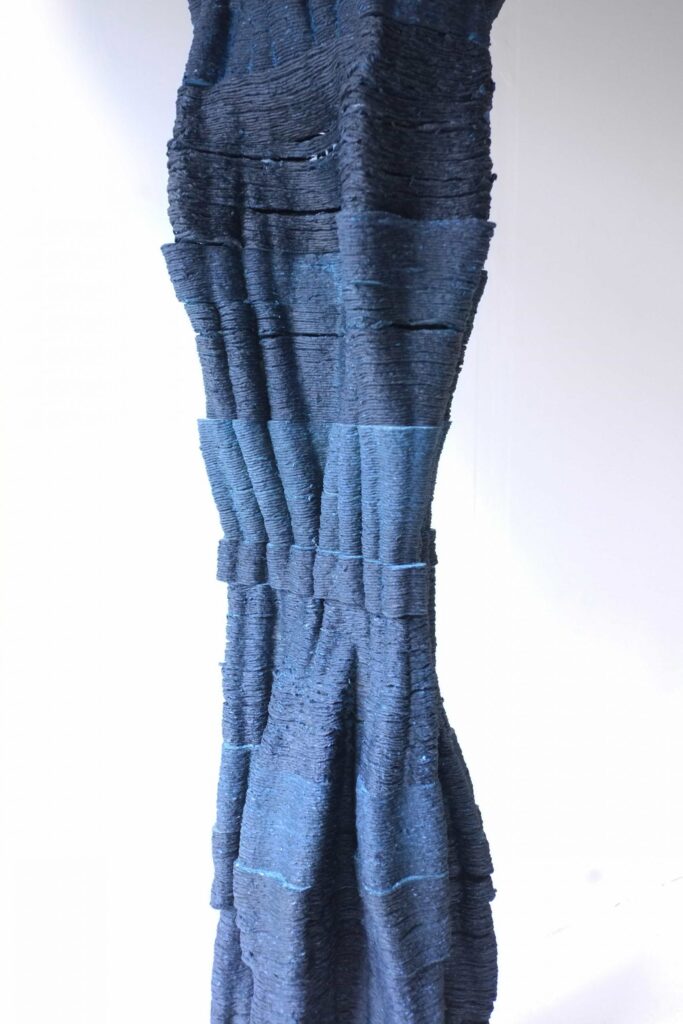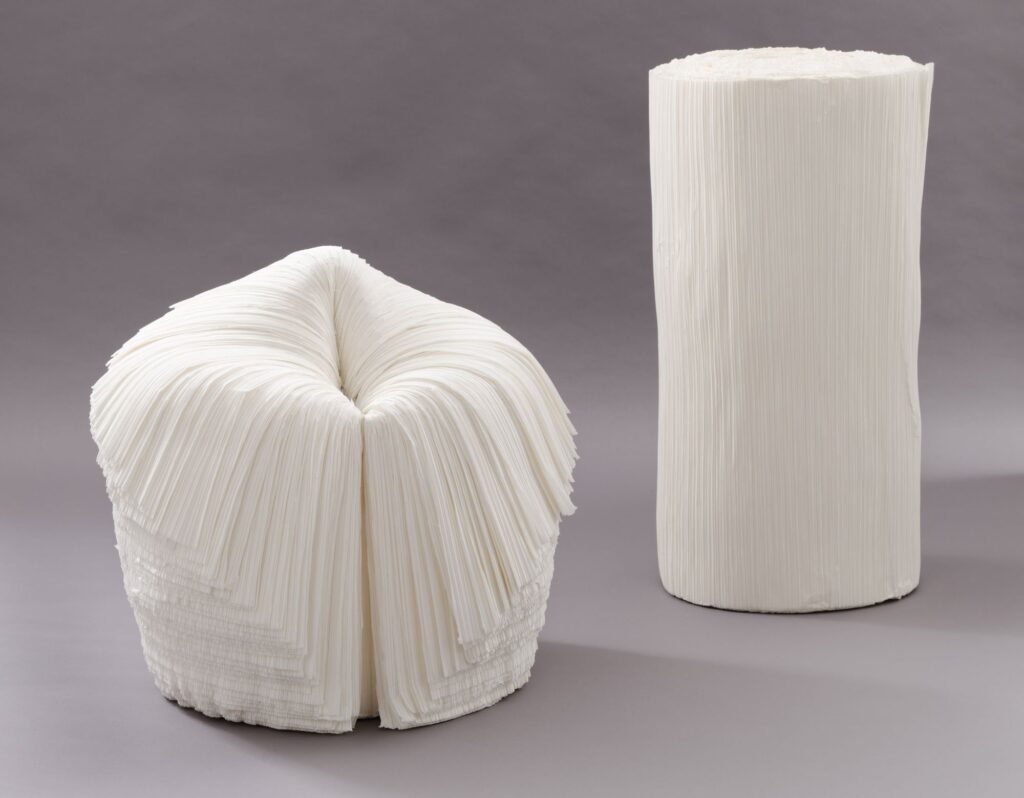
Which materials are responsible for reshaping the design culture of our time to be ‘contemporary?’ What power do these materials of the zeitgeist hold that can help move the world and its environment to be a better, more sustainable, more ethical place? What forms are enabled by those materials, and what is the concept of the ‘materials revolution?’
Ever since Paola Antonelli’s first exhibition as MoMA’s curator—Mutant Materials in Contemporary Design—opened in 1995, just a year after she joined the museum, she has been remembered for identifying the design materials of the era and for revealing the power of materials to breathe life and quality into design. That groundbreaking and memorable show came to illuminate the revolutionary materials of the 90s, particularly remembered for titanium, carbon fiber, and liquid plastic. In her new exhibit Life Cycles: The Materials of Contemporary Design, Antonelli, now the Senior Curator of Architecture and Design, is doing for 2023 what she did for the 90s: showing us how materials have defined the time and vice versa, guiding us in understanding the historical significance of materials. The exhibit demonstrates how far we have moved from traditional materials and techniques, demonstrating the problems that the planet has experienced in recent years that requires rethinking of materials.
If the discovery of porcelain defined the 18th-century luxurious table; molded plywood perceived as a way to shape mid-century social attitudes and the quest for democratic industrial design; stainless steel came to capture the dream of space-age design; and the idea that design had the power to change and shape behavior was perceived in the 1920s by the fathers of the Modern Movement; similarly, we learn in the show that the materials of today are no less intriguing or historically significant. We learn that the term ‘good design’ still has an allure of respect and responsibility, standing on the border between nature and human. With 80 objects by design practitioners from various disciplines, pulled from MoMA’s permanent collection—largely acquired by Antonelli—it demonstrates the power of materials and the breathtaking achievements in the world of materials.
This exhibition is beautifully situated in the West Wing of MoMA, which hosted some great designt show in recent seasons. Some of the objects have been seen before, such as Nendo’s Cabage Chair of 2007, and my beloved Sweeper’s Clock by Maarten Baas, but the new examples are more surprising, fascinating, and to current time. What interests me mostly is how designers today respond to issues such as the climate crisis and the shift in resources. I therefore was delighted to see Fernando Laposse’s Totomoxtle; Adhi Nugraha’s Cow Dung lamp built from manure collected from the streets of Indonesia; bricks made from waste, an enormous and beautiful panel made of coconut shells and mushrooms, Christien Maindertsman’s Acoustic Fur made in felt and textile remnants; Neri Oxman’s 3D glass vessels; and Studio Swine’s stool in sand-cast aluminum. I wish some other examples that are current and contemporary would have been included, such as the furniture by London-based blast studio, made from waste & living organisms (below is its ‘Blue Tree,’ a 3d printed column made from used coffee cups dyed with a natural blue pigment shaped into an organic trunk); the vegan sneakers by Saye; or Erez Nevi Pana’s glaze made in cashew nuts and utilized to cover objects made from waste. The materials presented in the show from the early part of the century were seen and some have become outdated.
Ultimately, I enjoyed seeing the most recent advances in materials and technologies and their impact on designers’ complex relationship to materials. The show allows us to rethink design and its multifaceted character and to recognize that materials must be used holistically and that the balance of the functional, the conceptual, the critical, the aesthetic, and the political, is at the core of contemporary design culture.
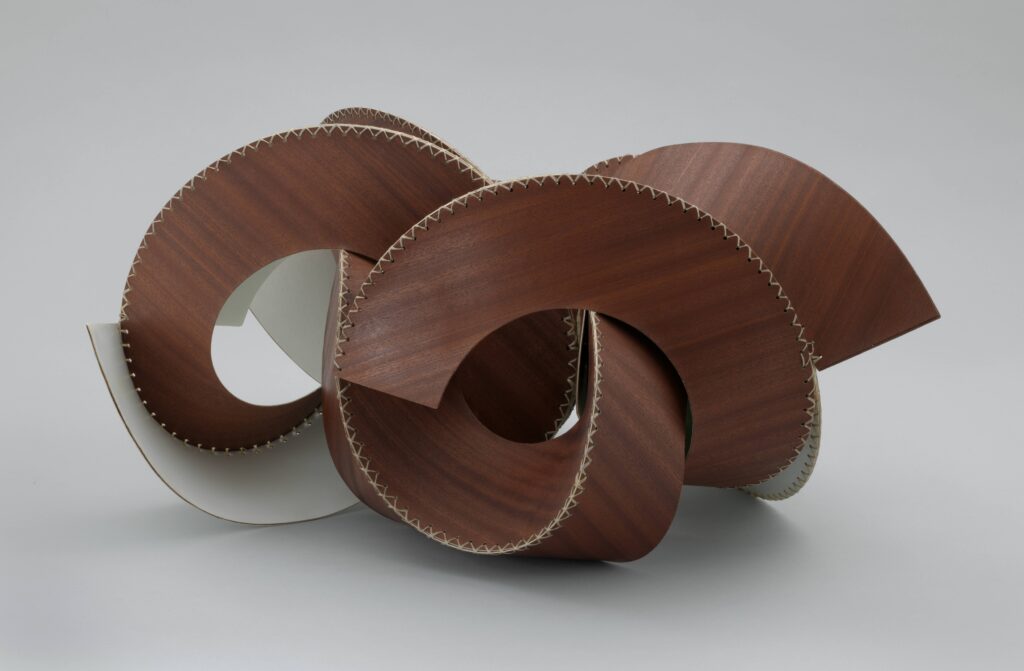
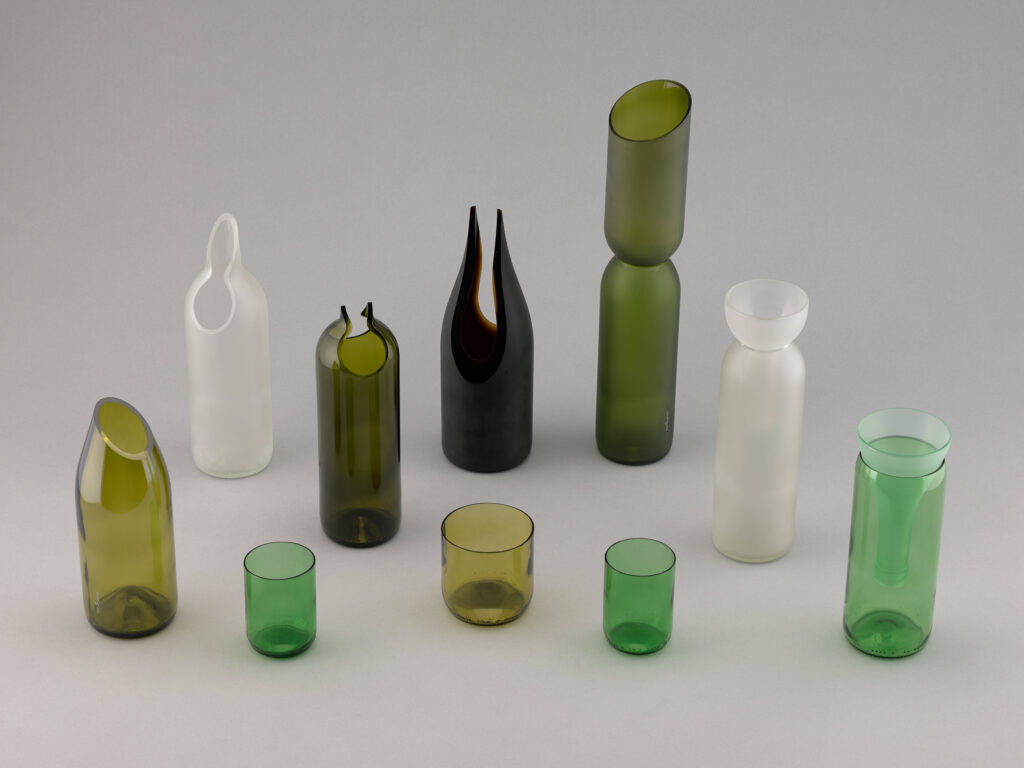
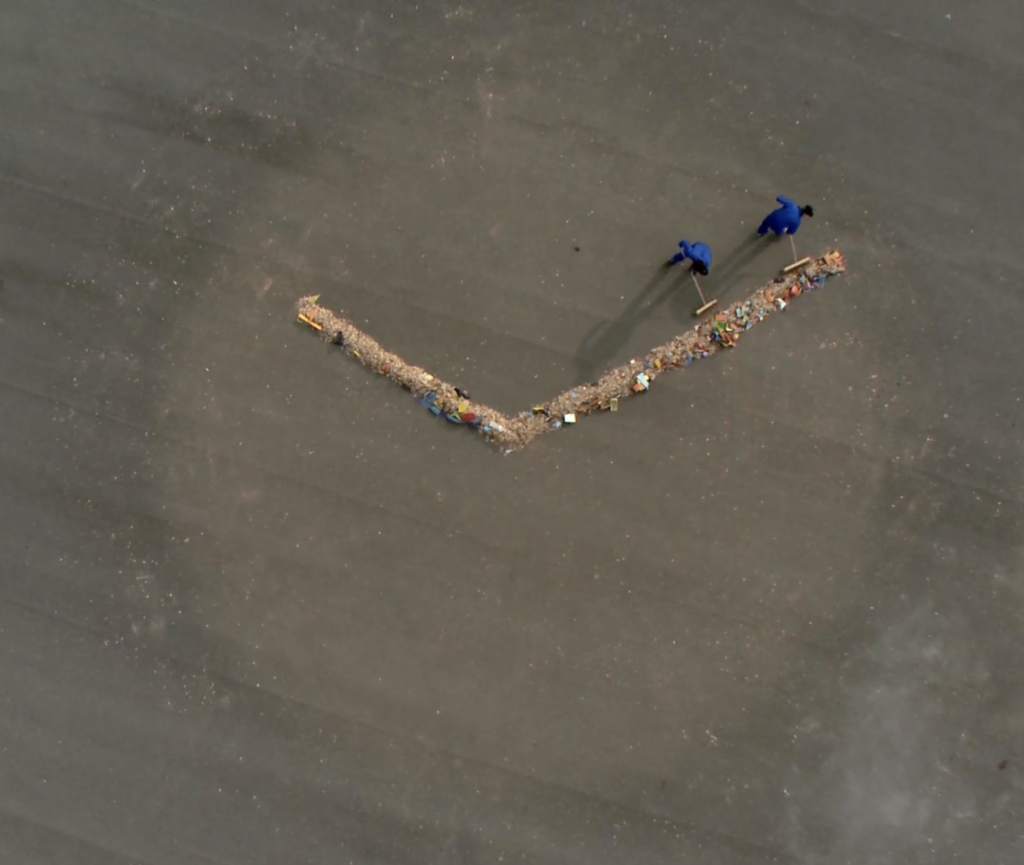
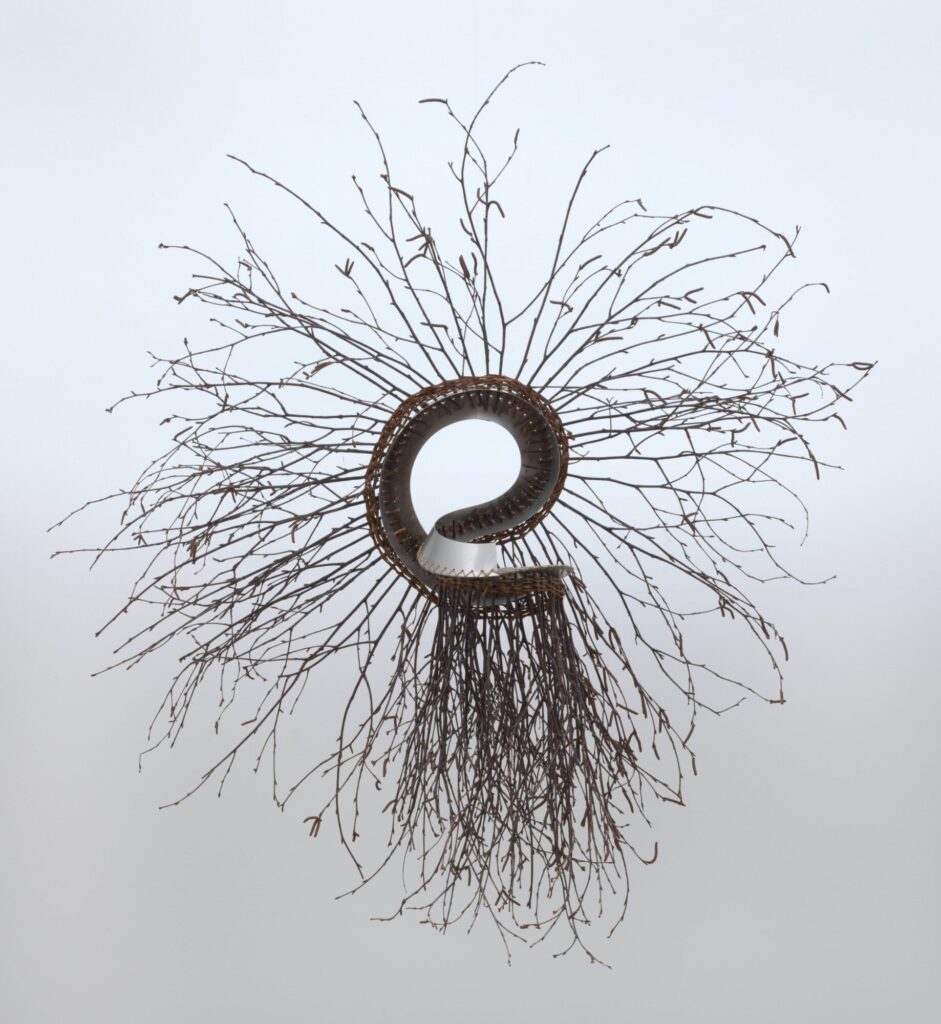
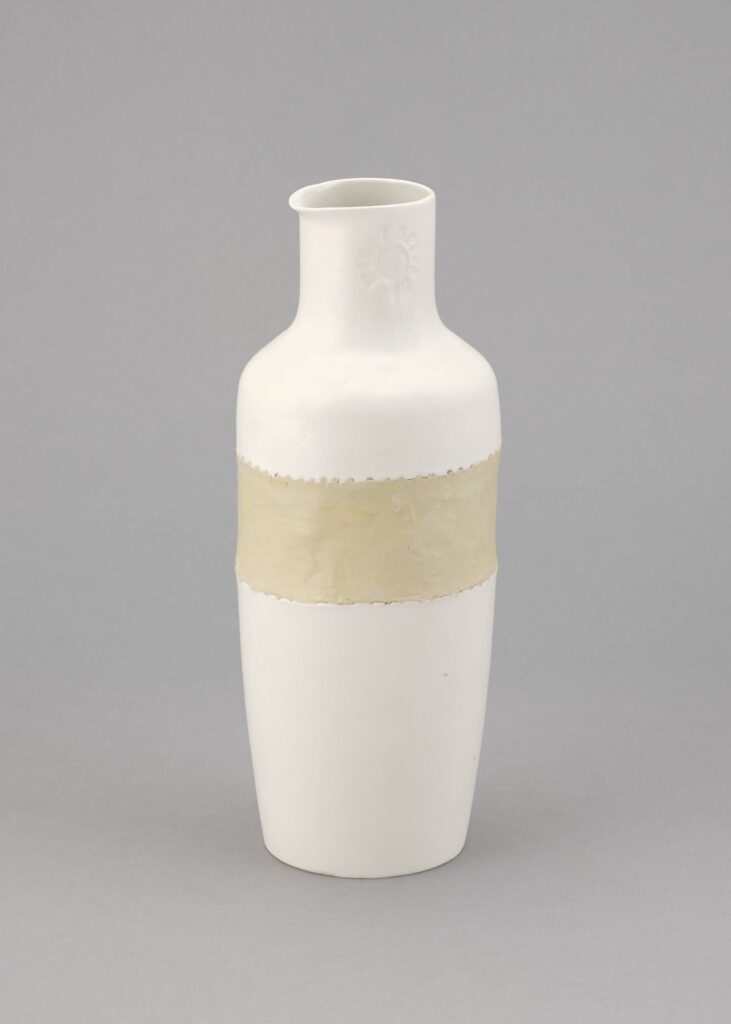
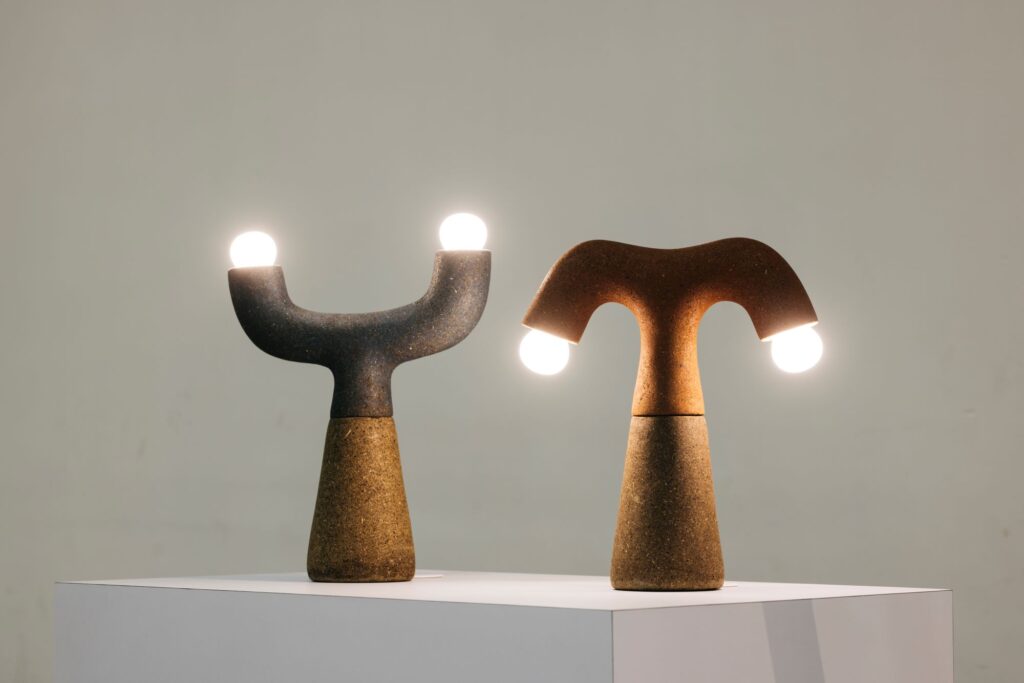
Adhi Nugraha. Cow Dung Lamps. 2021. The Museum of Modern Art, New York. photo: Studio Periphery.
